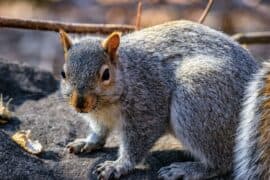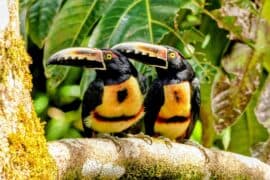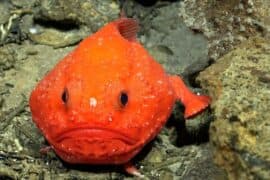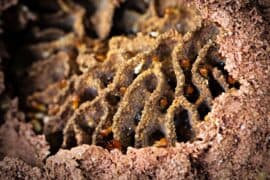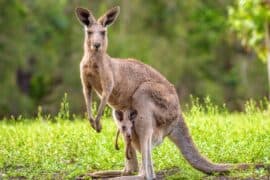Brown thrasher
(Toxostoma rufum)
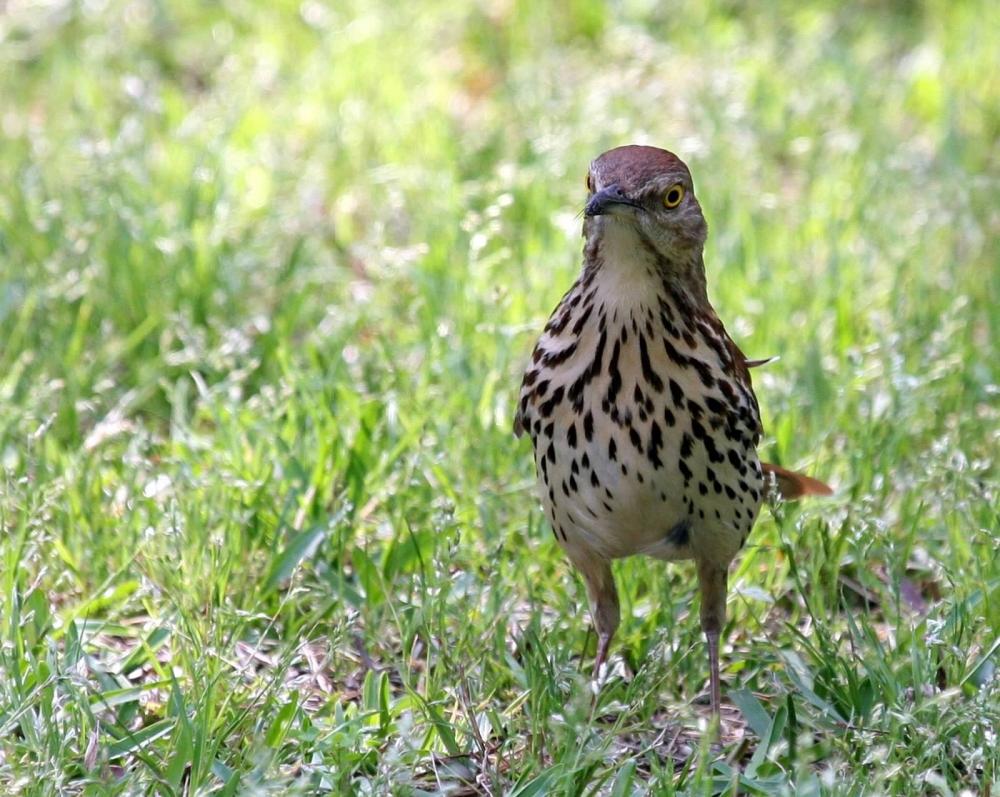
Description
Toxostoma rufum, commonly known as the brown thrasher, is a medium-sized songbird that belongs to the family Mimidae. This species is native to North and Central America and is widely distributed throughout the United States, Mexico, and Canada. The brown thrasher is a highly adaptable species that can be found in a variety of habitats including open fields, woodland edges, suburban areas, and parks. In this article, we will explore the physical characteristics, behavior, habitat, diet, and conservation status of the brown thrasher. Physical Characteristics The brown thrasher is a medium-sized songbird that typically measures between 25-30 cm in length and weighs between 65-90 g. The bird has a long, curved bill that is well-suited for digging in the ground for insects and other prey. The plumage of the brown thrasher is primarily brown with a white chest and a reddish-brown tail. The wings of the bird are also reddish-brown in color and have prominent white wing bars. The brown thrasher has a long, curved tail that is often held upright while perched. The male and female brown thrasher look similar, although the male may be slightly larger. Overall, the physical characteristics of the brown thrasher allow it to be well-adapted to its environment and to successfully hunt for food. Habitat and Range Toxostoma rufum is a highly adaptable bird species that is found throughout North and Central America. Brown thrashers can be found in a wide variety of habitats, including open fields, woodland edges, suburban areas, and parks. They are also known to live in agricultural areas and orchards, where they can feed on insects and small fruits. The range of the brown thrasher extends from southern Canada to Mexico, with the bird being found in most of the eastern and central United States. The brown thrasher is a year-round resident in the southeastern United States, but it may migrate southward in the winter in other parts of its range. The bird can also be found in parts of the Caribbean, including Cuba and the Bahamas. Overall, the brown thrasher is a highly adaptable species that is able to thrive in a variety of habitats throughout its range. This adaptability has allowed the bird to maintain a relatively stable population, although habitat loss and fragmentation remain a threat to its long-term survival. Behavior The brown thrasher is a highly territorial bird species that is known for its aggressive behavior towards other birds and animals. During the breeding season, male brown thrashers will defend their territory by singing loudly and chasing away intruders. Brown thrashers are also known for their distinctive song, which is a long series of repeated phrases. The male brown thrasher will sing to attract a mate and defend his territory. The female brown thrasher is responsible for building the nest and incubating the eggs. In addition to their territorial behavior, brown thrashers are also known for their omnivorous diet. The birds feed on a variety of insects, fruits, and seeds, and are able to dig in the ground for insects using their long, curved bills. Brown thrashers may also feed on a variety of fruits, including strawberries, blackberries, and raspberries. Overall, the behavior of the brown thrasher is well-adapted to its environment, allowing the bird to successfully defend its territory and find food. However, like many bird species, brown thrashers are threatened by habitat loss and fragmentation, which can disrupt their behavior and threaten their long-term survival. Diet Toxostoma rufum is an omnivorous bird species that feeds on a variety of insects, fruits, and seeds. The bird is known for its ability to dig in the ground for insects, which it does using its long, curved bill. Insects consumed by the brown thrasher may include beetles, caterpillars, grasshoppers, and other small arthropods. Brown thrashers are also known to feed on a variety of fruits, including strawberries, blackberries, raspberries, and other small fruits. During the winter months, when insects and fruits may be less abundant, brown thrashers may also feed on seeds and nuts. Overall, the diet of the brown thrasher is well-adapted to its environment, allowing the bird to find food in a variety of habitats and seasons. However, the bird's reliance on certain types of fruit and insects means that it may be vulnerable to changes in its environment, including habitat loss, climate change, and pesticide use. Breeding The brown thrasher typically breeds between April and August in North America. During the breeding season, male brown thrashers will defend their territory by singing loudly and chasing away intruders. The male brown thrasher will sing to attract a mate and defend his territory. After a male and female brown thrasher form a pair bond, the female is responsible for building the nest and incubating the eggs. The female typically builds the nest on the ground or in a low shrub, using a variety of materials such as twigs, leaves, and grasses. The female will lay between 2 and 6 eggs, which she will incubate for approximately 11-14 days. Once the eggs hatch, both parents will work to feed the young birds. Brown thrasher chicks are altricial, meaning that they are born relatively undeveloped and require significant care from their parents. The chicks will remain in the nest for approximately 9-13 days before fledging, or leaving the nest. After fledging, the young birds may remain with their parents for a few more weeks, learning how to find food and defend themselves. Overall, the breeding of the brown thrasher is well-adapted to its environment, allowing the bird to successfully raise its young and maintain its population. However, habitat loss and fragmentation can disrupt the breeding behavior of the brown thrasher, threatening its long-term survival. Conservation Status Toxostoma rufum is currently listed as a species of Least Concern by the International Union for Conservation of Nature (IUCN). This means that the bird is not considered to be at significant risk of extinction at the global level. The brown thrasher has a relatively large range and a stable population, and it is considered to be a highly adaptable species that can thrive in a variety of habitats. However, like many bird species, the brown thrasher is threatened by habitat loss and fragmentation caused by human activities such as urbanization, agriculture, and development. Pesticide use and other chemical pollutants can also pose a threat to the bird's food sources and nesting sites. Conservation efforts for the brown thrasher typically focus on protecting and restoring its habitat, such as by preserving open fields and woodland edges and reducing pesticide use. The bird is also protected under the Migratory Bird Treaty Act in the United States, which prohibits the taking, possession, or sale of the bird without a permit. Overall, while the brown thrasher is currently considered to be a species of Least Concern, ongoing conservation efforts are important to ensure the continued survival of this and other bird species in the face of environmental threats. Conclusion Toxostoma rufum, the brown thrasher, is a highly adaptable bird species that is found throughout North and Central America. The bird is known for its distinctive song, aggressive behavior, and omnivorous diet. While the brown thrasher is not currently in danger of extinction, it is threatened by habitat loss and fragmentation. It is important to protect the habitats of this and other bird species to ensure their continued survival.
Taxonomic tree:



